Storage solutions: Bedevere
Posted by Huw,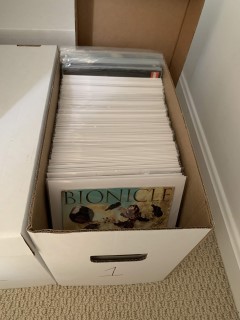
Today, Devon, aka Bedevere, discusses the storage of instructions:
I, like many of you, have an extensive LEGO collection. In fact, I have 1358 sets (which puts me at 1111th on Brickset). However, I prefer to keep my collection built and displayed rather than disassembled and sorted by brick.
I recently moved, which meant packing, storing, and unpacking a LOT of sets. Naturally, during this process, many of the sets became disassembled which forced me to find the relevant instruction manuals to reassemble them. Fortunately, due to the way I store and sort my manuals, this was a simple process and is the focus of what I will be sharing with you today.
A long, long time ago, my instructions were tossed into a giant blue cylindrical rubbermaid tub, like the one seen to the left. Books were stacked on top of one another which forced a costly lookup time to find a specific manual (the worst case scenario looking at each book in the stack until the one I was searching for was found). This continued for quite some time as I did not often need to go searching for manuals. Eventually, my desire for a better organised system got the better of me and I started working on v2 of my manual collection.
My next attempt at sorting is somewhat common, as I’ve come to find out. I went to my local big box store and purchased a dozen large 3-ring binders along with a stack of single sheet page protector sleeves. The idea was that each manual would go inside a sleeve and each sleeve would be added to a binder, sorted by theme. Then, I could label each binder and easily find a manual I’m looking for by going to my bookshelf and pulling out the binder. Great idea in theory but horrible in practice.
This resulted in a few issues. First, adding new sleeves was a nightmare. If I wanted to add a new sleeve in the middle of the binder, this would require me to flip through everything, find the spot where I wanted to insert a new manual, open the binder rings, and HOPE that none of the sleeves would come sliding out while doing so.
The next problem came from the pages themselves. They are neither rigid nor sealed at the top. The lack of rigidity meant that I had a hard time flipping through serves of manuals, both to look for a manual and to insert a new one. They would often flop around and slip against each other, forcing me to carefully flip through the binder one sleeve at a time.
Additionally, the lack of a seal at the top meant that, if I was not careful, manuals could slip out from the top and cause a mess. This was a larger problem for sleeves that had two half-page manuals in them, stacked on top of each other. The top manual was close to the top of the sleeve and, considering it was only half a page tall, would often come right out.
I lived with this set up for quite some time because I didn’t often need to find a manual, but I knew I had to change at some point because adding new manuals to the collection became such a chore. However, it wasn’t until my fiancée had a stroke of brilliance that I was able to find the ideal solution.
Having been an avid comic book collector for a few years now, I’m no stranger to the idea of bagging and boarding. But for those of you who are unfamiliar, the process involves taking a plastic sleeve with a flap at the top, inserting a thin but rigid board into the sleeve, then inserting the comic book in front of the board before sealing the flap down either with a preset sticky seal or a piece of tape. Each bagged and boarded comic would then go into a long box, or a cardboard box specifically shaped to hold comic books.
My fiancée, being the smart and creative person she is, came up with the idea to apply the same storage method to my LEGO instruction manuals. My jaw hit the floor as I was unable to believe such an incredible idea had been staring me in the face for so long. I immediately got to work, purchasing “magazine” size bags, boards, and boxes from a major online retailer. With her help, we were able to “pre-board” 500 bags and start filling them with instructions.
Not to get ahead of myself, but this ended up working perfectly. This storage solution had the following benefits:
- Rigid manuals, meaning better protection from wear and tear and easier browsing
- Easy insertion of new manuals into the system
- Sealed tops, meaning no manual would fall out of its bag
- Stackable storage with sturdy boxes
- Easy to move and relocate due to more manuals per “holder” (box versus binder)
- Easy to find a manual due to the quickness of “flipping” through rather than turning page by page.
Overall, this helped with keeping things organised, consolidated, and in good condition. But, of course, what would this article be without pictures of the collection in action? Below are the various ways in which manuals have been stored and little tracks I’ve employed to keep them as consolidated and organised as possible.
The easiest type of manual to store is the full page manual. This is a manual which is the equivalent of a normal sheet of paper. These fit in the magazine bags perfectly. No more to say about those!
The next easiest is the half sheet. Because the pages have some natural curve to them, you can stack two half page manuals on top of each other without fear of them slipping into each other. This makes it possible and simple to store more manuals per bag and board. Of course, it means you need to remove the top manual if you’re interested in the bottom manual, but this is a small price to pay to get double the efficiency out of a single bag and board.
The next is what I call third page manuals. These manuals likely folded in half when they were packaged which makes it harder to tell what set they belong to. Instead of keeping them folded, I’ve unfolded them and placed them in a similar way to the half page manuals. However, you can really only fit three manuals per bag and board this way.
There is a slightly different process for the tiny manuals you find with most impulse sets. Rather than sliding the manuals right into the bag, we are going to use 9-pocket page sleeves. These sleeves should be familiar to anyone who collects any sort of trading cards. We need to cut the three ring binder holes off from the side and then insert the sleeve right into our bag. This gives us space for a whopping nine manuals in a single bag and board.
Then there comes the troublesome manuals. First, there are the manuals that are slightly longer than a single sheet of paper. For now, those are going into a bag and board but are left unsealed as the flap can’t fit around the top. Fortunately, these manuals will still fit inside the boxes provided there is some space for each bag and board to lean at a bit of an angle.
Then, of course, there are some outliers that would never work in this system. There are the manuals which are too thick to fit inside a bag and board. Fortunately, given how thick they are, they have some natural rigidity to them and can fit inside the boxes and work with the rest of the system easily. But the only manuals for which I have no solution is any of the massive, spiral bound manuals. Fortunately, these are rare occurrences and I don’t feel too bad putting them somewhere nearby and letting them be their own thing.
Thank you to everyone who read this far! This was a lot to read about storage for manuals but I hope you found it informative! I haven’t seen much talk online about manual storage and I’ve never seen anyone store them the way I do. I’m sure I’m not the first to do it, but I haven’t seen anyone discuss this method before, so hopefully this was a new idea to many of you. If you have any thoughts or ideas on how to improve the system, please let me know below! I’m always looking for ways to improve my storage.
115 likes
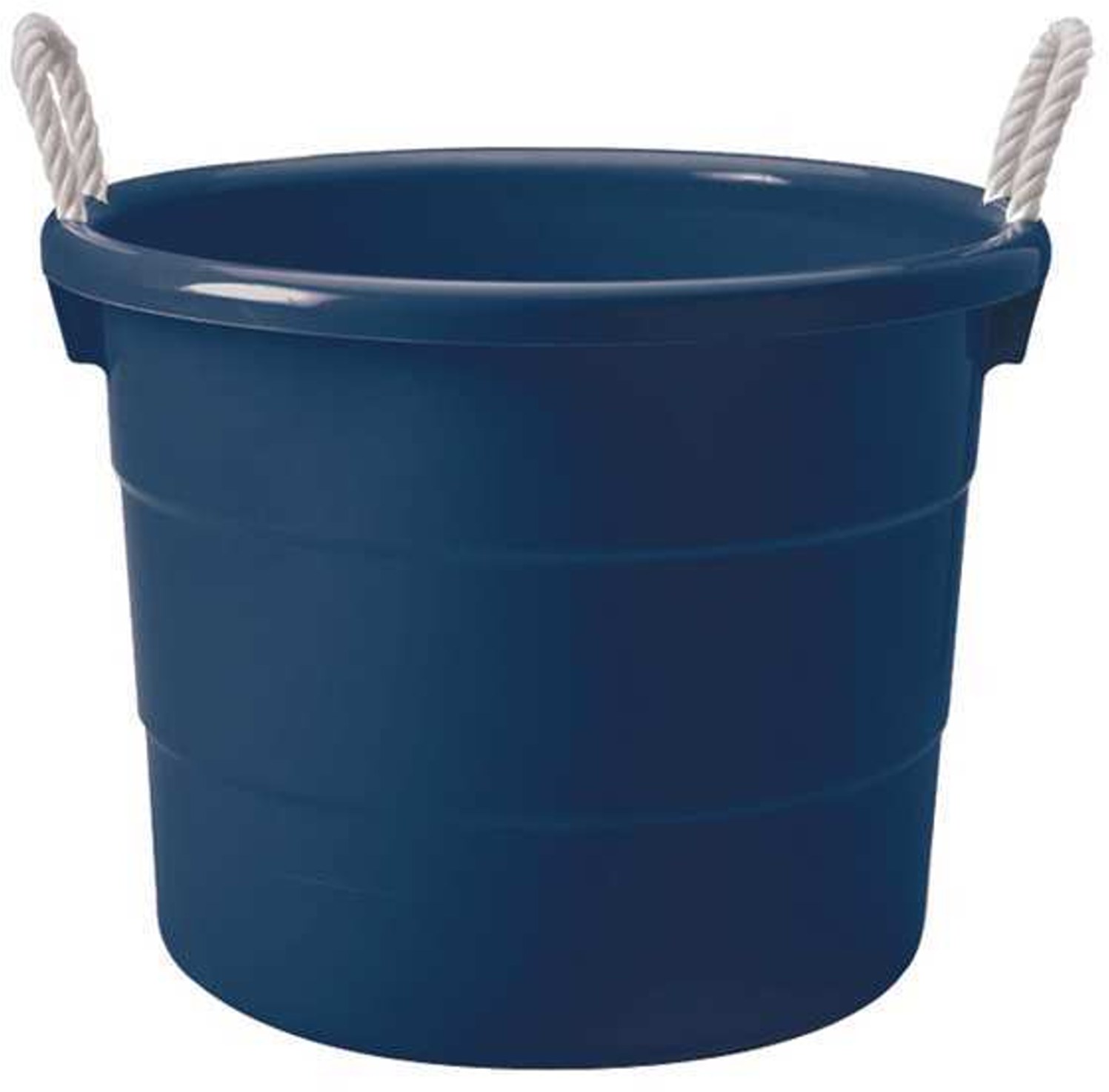
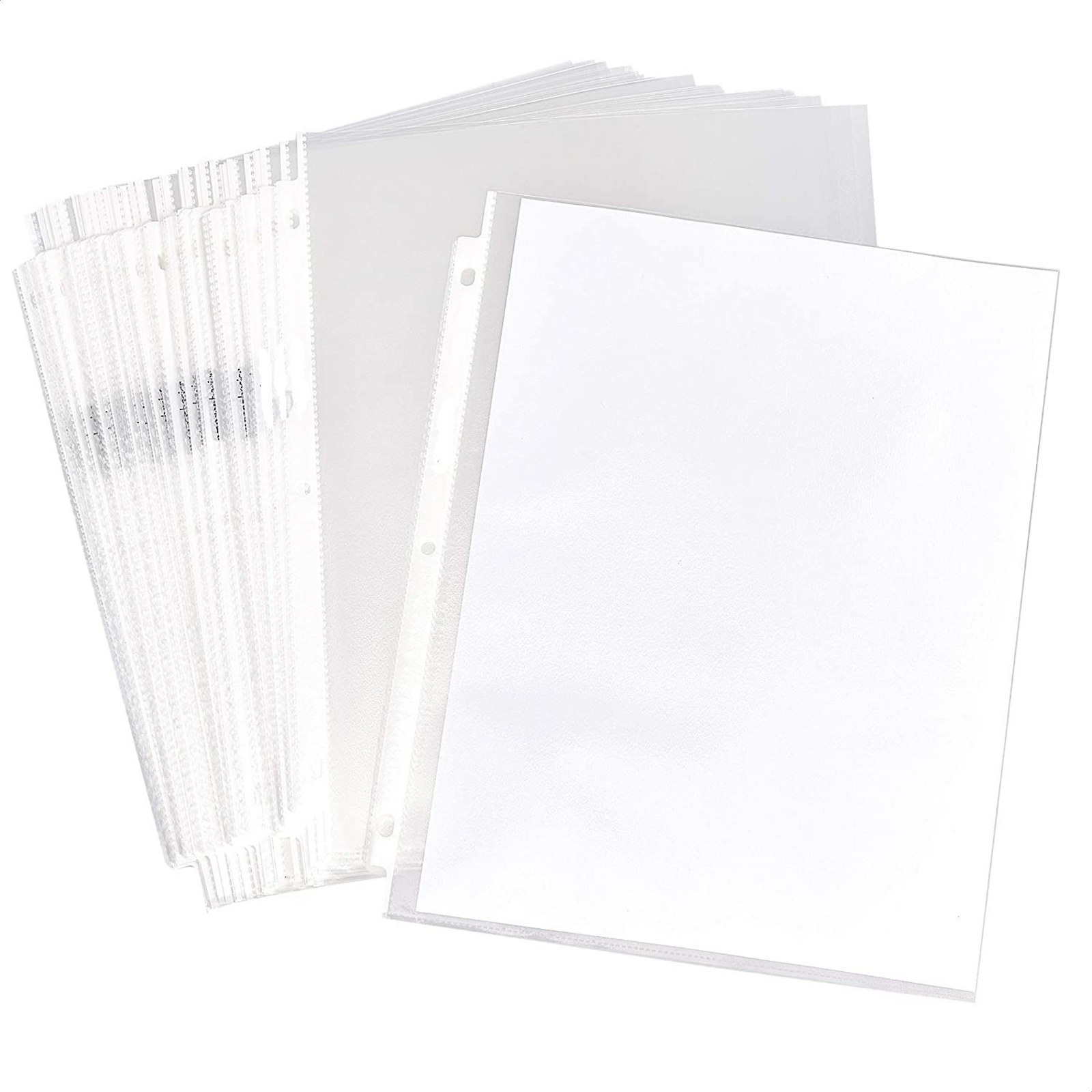
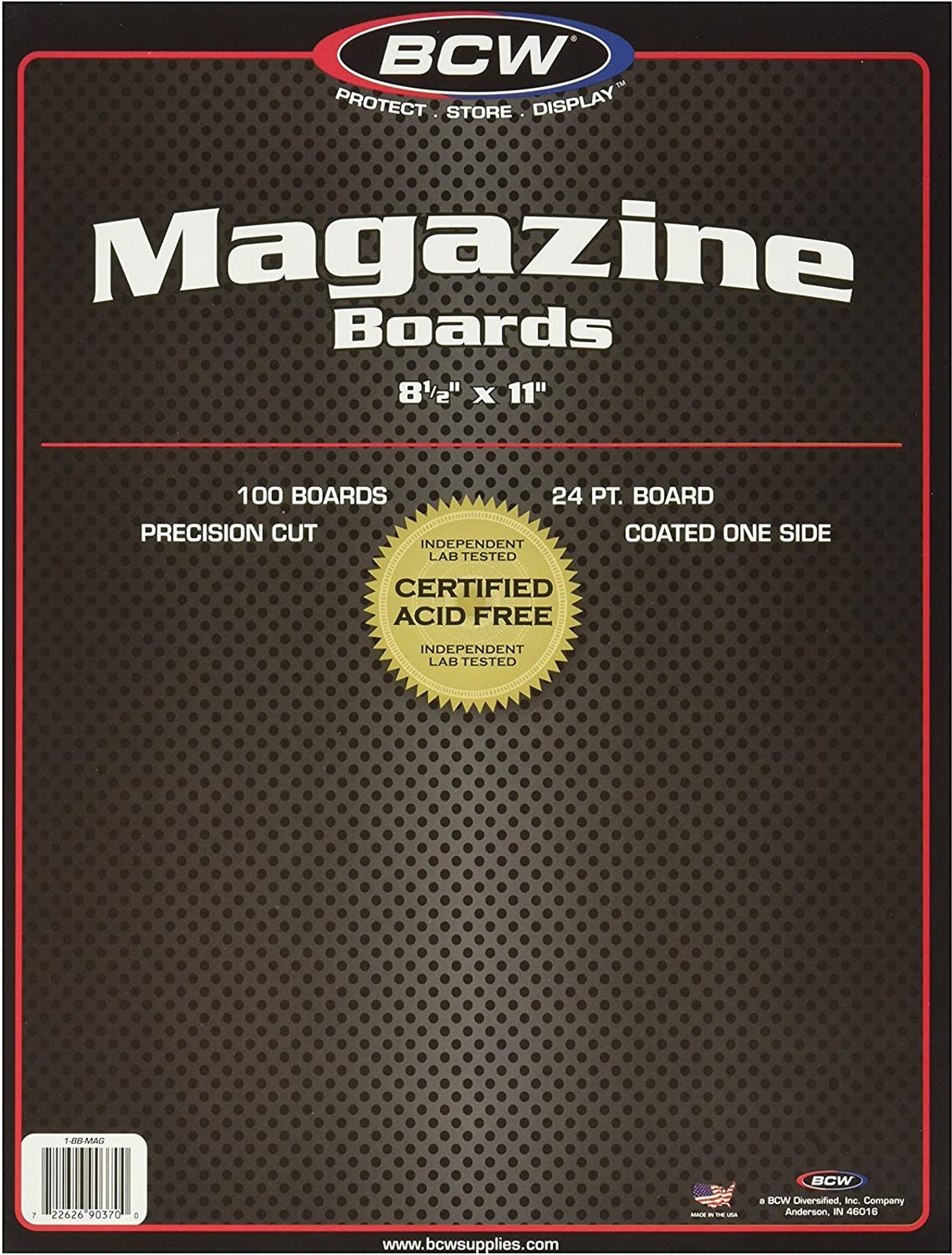
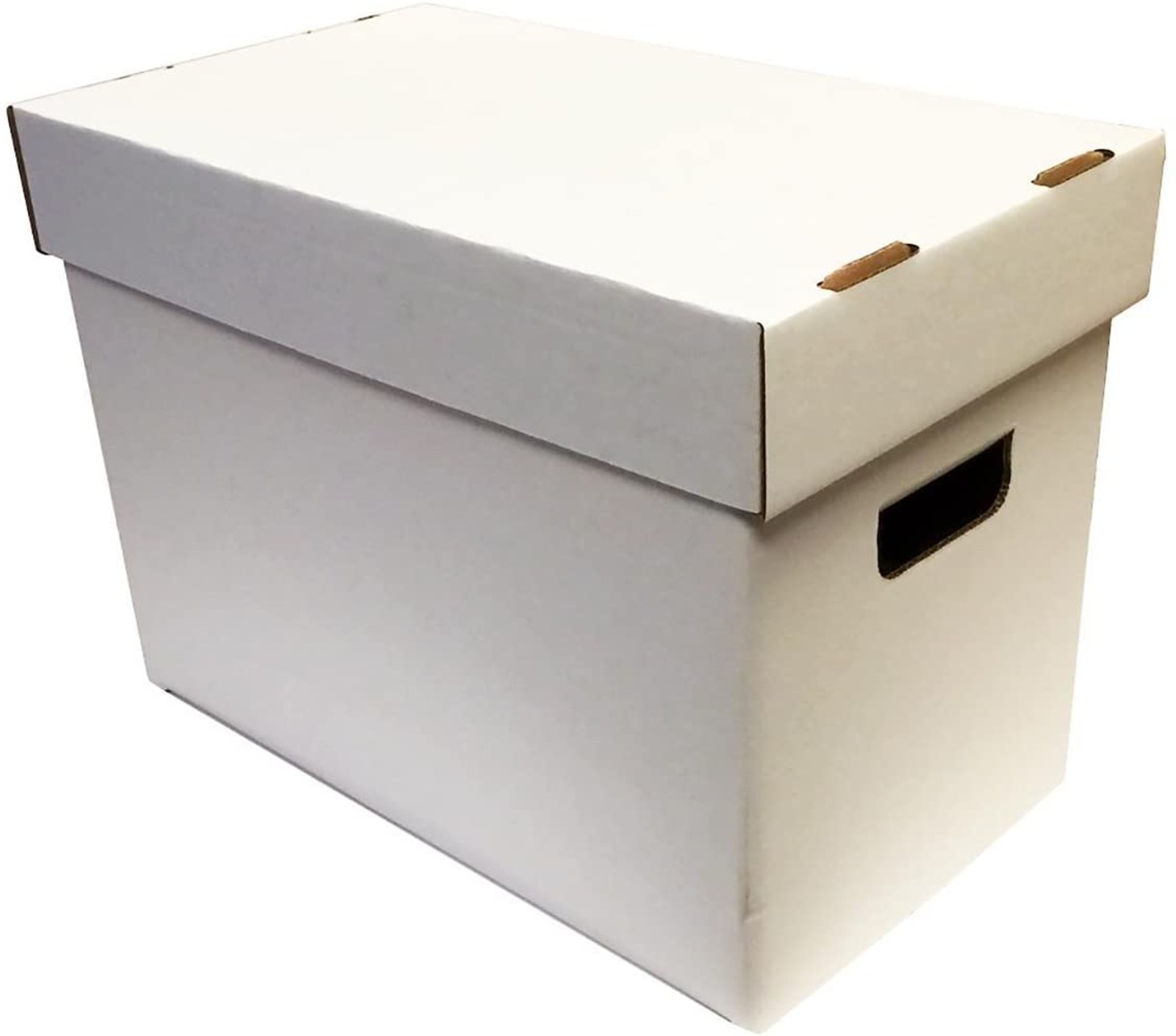

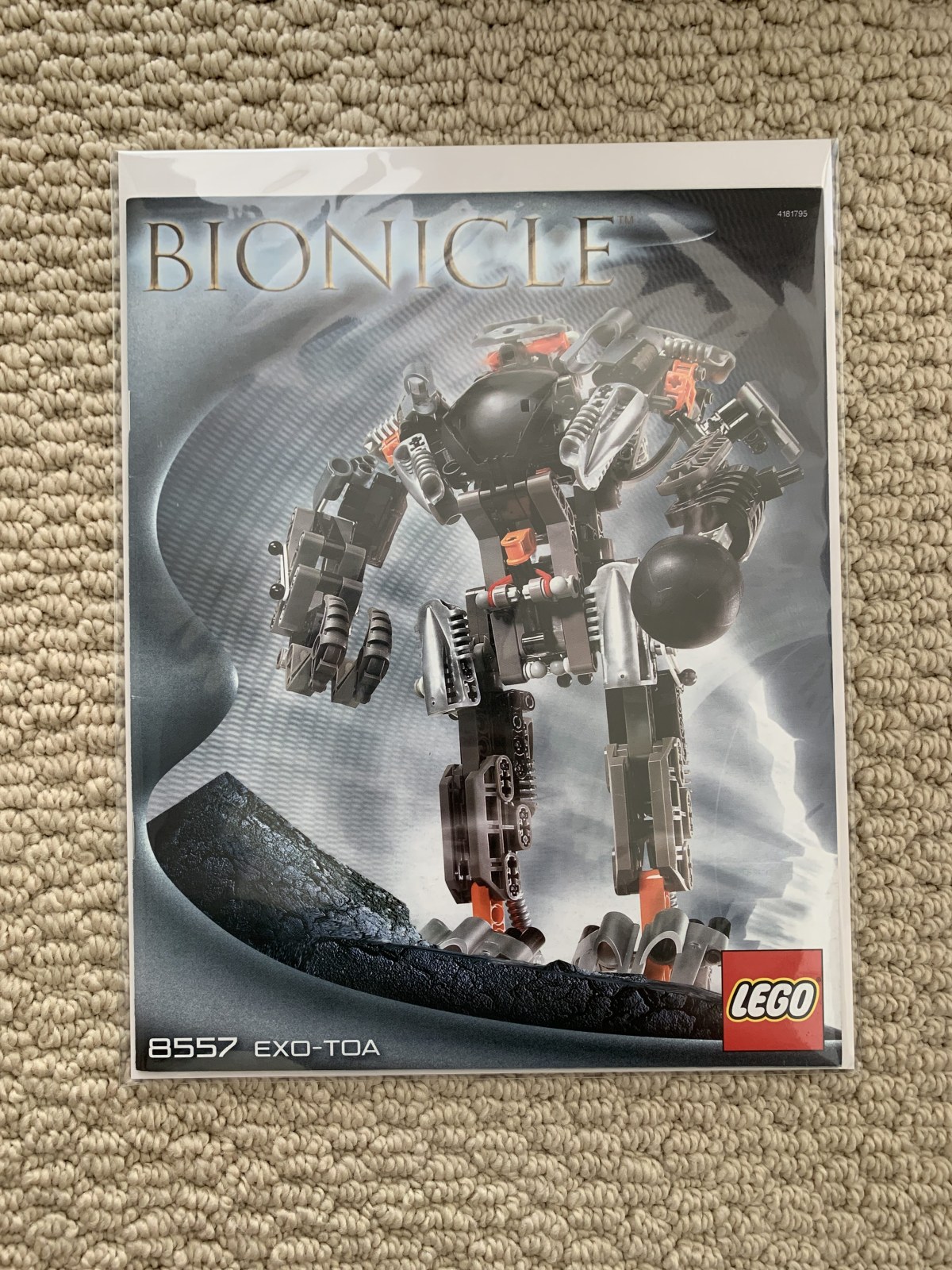
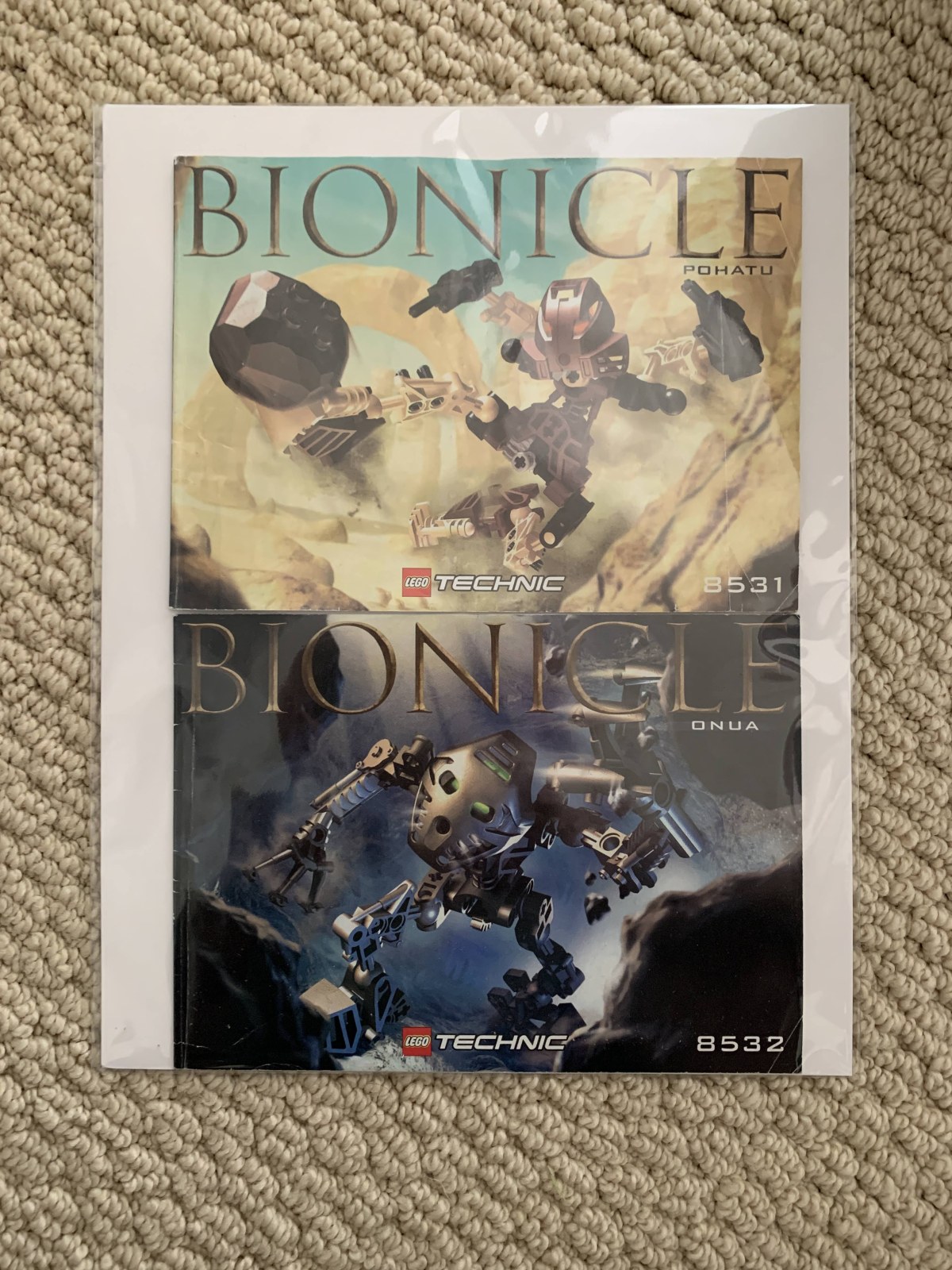
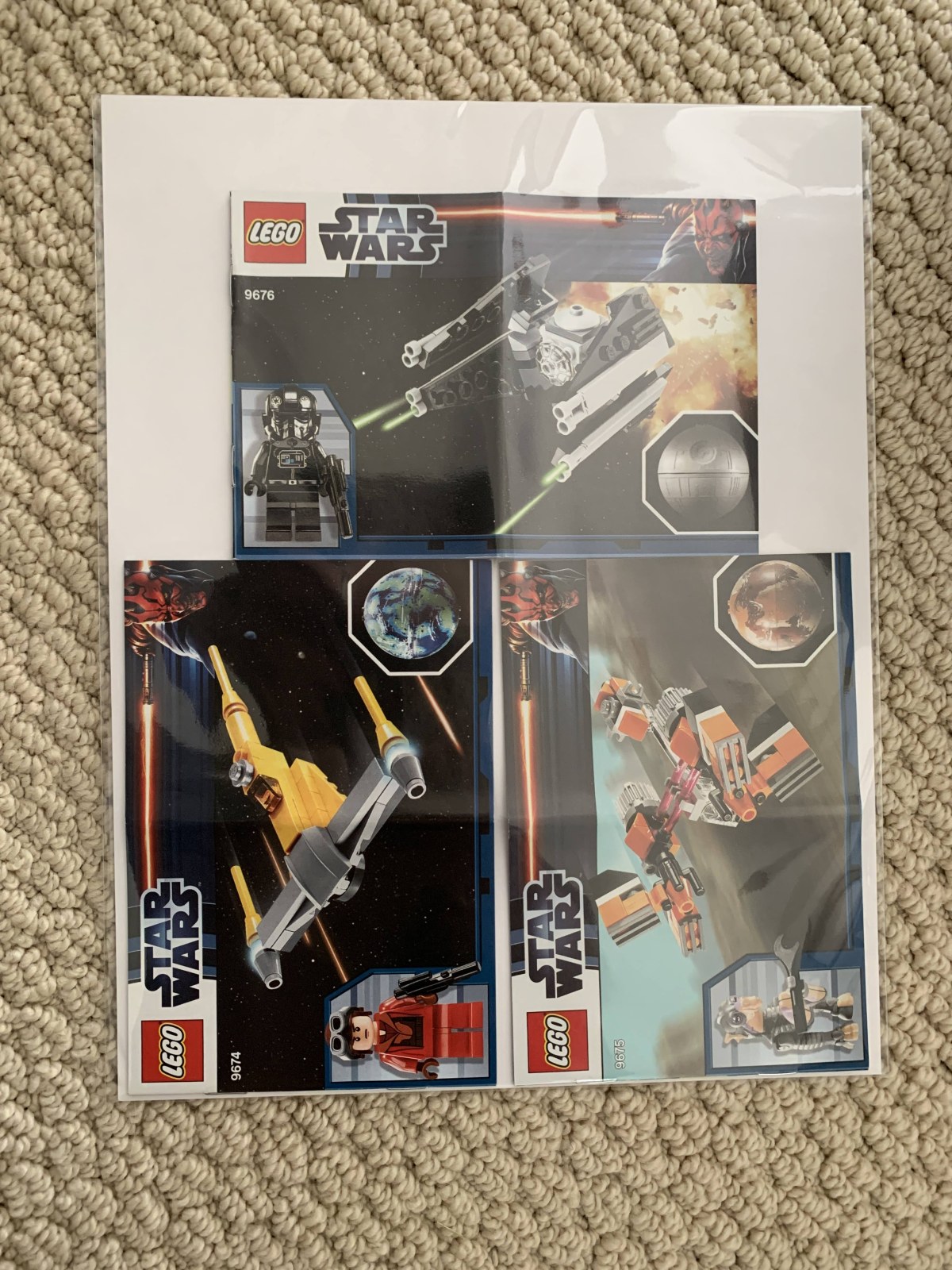
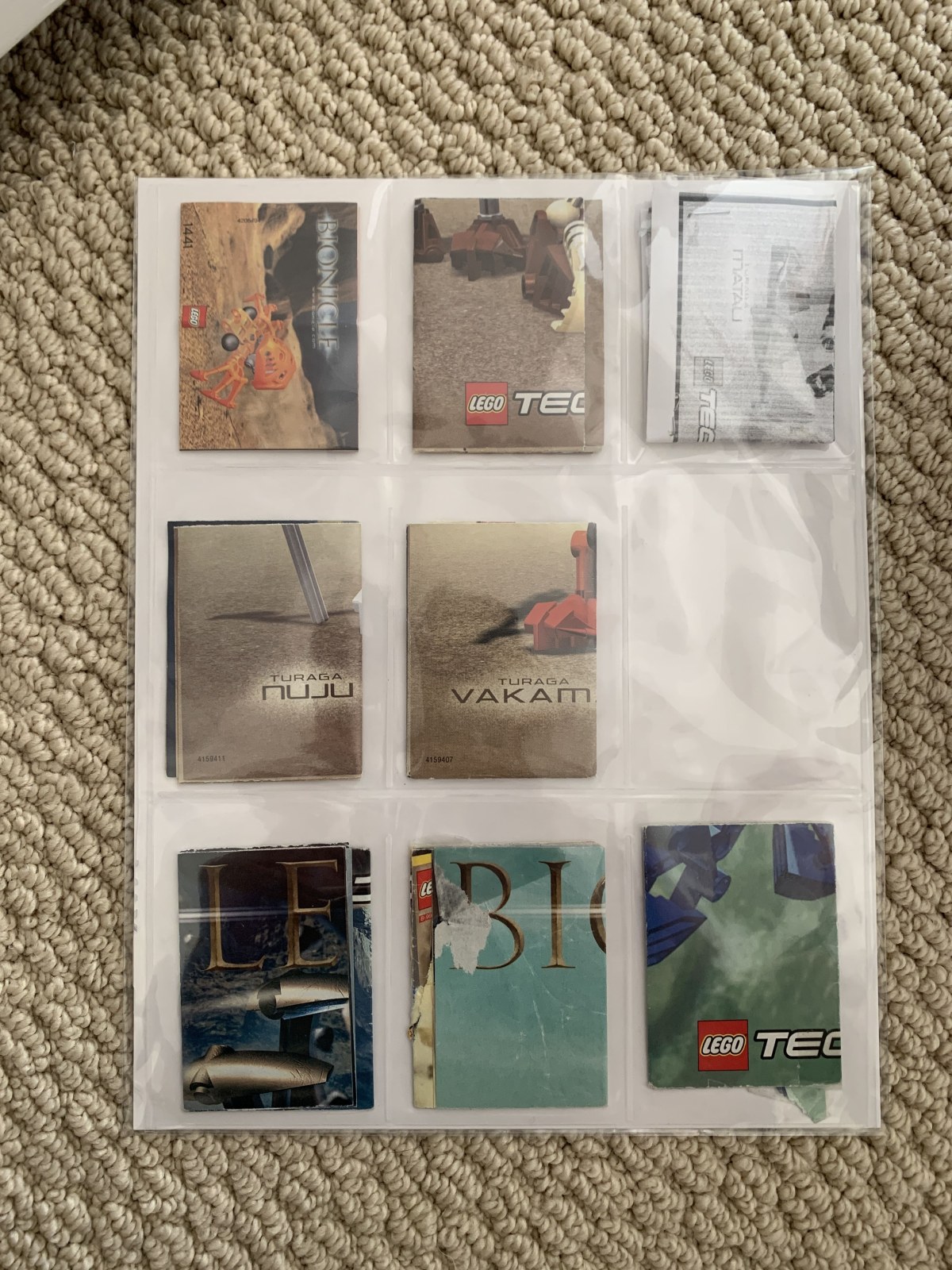
34 comments on this article
smart
Before the manuals came in sealed crinkly plastic bags, they often came in soft plastic bags with a cardboard insert, much like what you have with a resealable sticky strip. Because I was using wooden Ikea magazine holders to store mine, I would cut the cardboard insert to fit inside the magazine holder better.
On the 'spine' of the wooden magazine holder I used chalkboard paint and organised the manuals by theme and in numerical order. For smaller books and pamphlet-style instructions I just labelled cardstock inside a photo box and sorted them by theme also in numerical order.
Yours is almost like mine with just a few differences. I'm glad you posted this; I find it a very efficient and intact system for avoiding tearing manuals. It helps that I'm very careful too!
I use the large storage bricks. Just about the right width to hold a stack of the larger manuals with enough room at one end to also stack the smaller manuals.
This is a great way to store instructions. Forgive me if I missed it but how have you organised them?
Fascinating read and interesting concept.
I'm currently in the process of reorganizing my entire LEGO collection, including the manuals. With the really old sets from my childhood it is relatively easy as for one, I didn't have so many sets back then and secondly, those that I did have all fit into one ring binder.
The newer sets often came in a bag and board right out of the box, so could easily be adapted to your system.
The latest ones are the nastiest as LEGO has made a habit recently of simply throwing the manuals into the boxes without any protection, not even a crinkly plastic bag, so they often come out of the box severely crinkled themselves, sometimes even damaged.
In those cases I tend to use the online version of the manual to build the set and throw the damaged paper manual in the recycling bin. Something I would never have dreamed of doing before, after all I have payed for the manual as well, but as LEGO is cheaping out on anything these days, even the manuals, there's not much else one can do - other than buy from alternative manufacturers that take more care of their product.
The only real problem I have with ring binders and sleeves is with small but thick manuals like Architecture...
Great article! I have been down the exact same path as you and was about to switch my “stacking in bins” method to binders method. I have been reluctant to do so because the sleeves don’t seal at the top. Now I have another method. Thank you for sharing.
Another useful and well written storage article. Thanks for sharing!
@AddictedToStyrene said:
"This is a great way to store instructions. Forgive me if I missed it but how have you organised them?"
I’ve found that the way they’re organized isn’t too important because it’s so easy to flip through the collection. I’ve got four boxes filled and they’re organized by theme and then by year released, and i have a google doc where each box lists the different themes inside of it (and their order) so I just need to cross reference that doc and it’ll take me 10 seconds to find the right manual. However, even with all my manuals, as long as they’re sorted by theme, it’ll take me no more than a minute to look through everything and find what I’m looking for.
I have gone down the exact same path. Started with a big bin that had all the manuals in it, moved over to binders with sleeves but ran into the same issues you have, plus the fact that you cannot pick up the binder without all the sleeves "sagging down" and putting a lot of stress on themselves.
I have now moved on to Banker's Boxes with the sleeves in them, but, based on your suggestions here, will look for magazine boards and bags. Any recommendations (I'm in the US) for where to source the magazine bags?
I recently started using comic bags, boards and storage boxes. It is probably the best solution I've found so far. Awesome to see this series on storage focusing on other aspects of Lego collecting.
@flipus74 said:
"Any recommendations (I'm in the US) for where to source the magazine bags?"
I use this box, this bag, and this board:
https://www.amazon.com/dp/B01LYUY7CI
https://www.amazon.com/BCW-BBMAG-Magazine-Backing-Boards-White/dp/B002JQY0NG
https://www.amazon.com/Resealable-Magazine-Bag-100-count/dp/B00DV83AZU
@Bedevere - Very, very ingenious! I have a ‘proto’ version of this, but am definitely moving to something closer still.
One question, though: what’s your approach to the older, folded kind, manuals from Classic Space, Classic Castle and Legoland manuals? Would love to know.
Best!!
@jsosse said:
" @Bedevere - Very, very ingenious! I have a ‘proto’ version of this, but am definitely moving to something closer still.
One question, though: what’s your approach to the older, folded kind, manuals from Classic Space, Classic Castle and Legoland manuals? Would love to know."
I’ve only got a few legoland manuals. I believe there are some quarter sheet pages I use for those, like the 9-slot sheets. It’s honestly been awhile since I’ve looked at those though so I can’t remember if that’s exactly what I did, but it would work well. Here’s a link to what I’ve had:
https://www.amazon.com/20-Twenty-Pages-4-Pocket-Postcards/dp/B01M7YLLFL
I clicked because I saw Pohatu... not disappointed since its a pretty neat instruction storage system.
When the drawer bottom finally gives way, my 'Instruction Storage System' will either go the way of this great article, or the paper recycling bin is going to have a heavy week.
Digital instructions are just easier.
So funny, I used to collect comics too and I've never thought of this either.
This is the exact way I started storing my instructions years ago. Like you, I started with binders and protective sleeves and moved to this. My biggest issue with the binders were that they were bottom-heavy, and would stretch the 3-hole rings. It also became challenging to find efficient places to store the binders as my collection grew and I needed more room to store both instructions and bricks.
The only difference is that I use file cabinets in lieu of banker’s boxes. I sort by theme and then by set number with a Box account which has digital instructions for all sets organized the same way. I used Pendaflex hanging file folders (from standard to 3” box-bottom) with printed labels to quickly access instructions or add new ones. Given the 1,800 sets I have, it was the most elegant and scalable solution. My biggest concern about the bankers boxes are damage to the boxes themselves as they stay stacked too long and I don’t like the idea of having to move a box simply to get to another one.
By the way, for the thicker instructions, BCW has another magazine bag with SKU 1-MAG-THICK that works well. You can use the same board backing you do now, but protect the instructions from accidental damage.
BCW also carries plastic magazine bins SKU 1-MDB-BLK. They're more durable than the cardboard ones, though significantly more expensive. However, if there's a concern about moisture, they'll last much longer.
@Bedevere
Aha! I believe you're the Bionicle collector I referenced in my storage solutions article as having inspired me to use magazine boards, bags, boxes for my instructions (thank you, by the way!). I really do love this system and it works so much nicer than the binder + page protector setup I used to employ.
@JukeLimited said:
" @Bedevere
Aha! I believe you're the Bionicle collector I referenced in my storage solutions article as having inspired me to use magazine boards, bags, boxes for my instructions (thank you, by the way!). I really do love this system and it works so much nicer than the binder + page protector setup I used to employ."
That’s amazing!!! I go by RegExr on Reddit so if you saw my post there from about a year back, then I’m likely the same guy :) glad it helped!!
How do I submit my storage solution?
Wow, this is absolutely brilliant. I will be redoing my instructions organization based off of this. Right now, I have them sorted by size and then stacked in latched plastic containers. This is such a great idea.
^ Send to helpdesk @ brickset.com
to state the inevitable.. unless you have at your disposal UNLIMITED storage space + staff (kept on payroll - OR you do not have to attend some daily job being a succesful millionaire, stock holder and such)... all these sometimes very clever ideas can simply NOT hold aganst the easiest (most space consuming) solutions to keep the LEGO instructions books and pieces (mostly in zipped backs) within the same consumer / sold paper box. It simply as that.. I quite envy those persons claiming that they have 2000 + sets neatly stacked up in their storage...
now comes the time when they want to build ONE particular of them... surely they can locate quite easily the instructions - but what about the ACTUAL BRICKS? - no ONE! - and I have to stress this OUT.. NO-ONE yet in this ridiculous serie of "show-on offs" described clearly how they go about to locate the particular bricks needed for building up some 10 yrs+ old set..
To cut to the bottom. the EASIEST most "primitive" solutions tend usually to BE THE BEST - aka.. keep the full box, put inside the manual and bricks in zipped bags - and you can NEVER GO WRONG!. you will be always able to build that stuff if you want to (given that you have space to store the boxes).-
everything else presented here - within this "storage theme" is just plain show on offs" for me. We have seen some great solutions how to s´tore individual parts based either on shape or color, how some ppl undeliberately disclosed the most profound "magic" how to keep their collection growing (by buying multiple sets and selling them a couple of yrs after EOL to get some substantial "value" back).. ´
but all in all its ALL about what I stated earlier.. the brickset, stonewars, brickbrothers etc.. that receive sets for free from LEGO are excluded,.. but otherwise. the absolute NO-LOSER is to keep the original box opened (not flattened), and the pieces dissambled in zipped plastic bags. That way you can keep the max. of the original purchase price.
@LukasM said:
"to state the inevitable.. unless you have at your disposal UNLIMITED storage space + staff (kept on payroll - OR you do not have to attend some daily job being a succesful millionaire, stock holder and such)... all these sometimes very clever ideas can simply NOT hold aganst the easiest (most space consuming) solutions to keep the LEGO instructions books and pieces (mostly in zipped backs) within the same consumer / sold paper box. It simply as that.. I quite envy those persons claiming that they have 2000 + sets neatly stacked up in their storage...
now comes the time when they want to build ONE particular of them... surely they can locate quite easily the instructions - but what about the ACTUAL BRICKS? - no ONE! - and I have to stress this OUT.. NO-ONE yet in this ridiculous serie of "show-on offs" described clearly how they go about to locate the particular bricks needed for building up some 10 yrs+ old set..
To cut to the bottom. the EASIEST most "primitive" solutions tend usually to BE THE BEST - aka.. keep the full box, put inside the manual and bricks in zipped bags - and you can NEVER GO WRONG!. you will be always able to build that stuff if you want to (given that you have space to store the boxes).-
everything else presented here - within this "storage theme" is just plain show on offs" for me. We have seen some great solutions how to s´tore individual parts based either on shape or color, how some ppl undeliberately disclosed the most profound "magic" how to keep their collection growing (by buying multiple sets and selling them a couple of yrs after EOL to get some substantial "value" back).. ´
but all in all its ALL about what I stated earlier.. the brickset, stonewars, brickbrothers etc.. that receive sets for free from LEGO are excluded,.. but otherwise. the absolute NO-LOSER is to keep the original box opened (not flattened), and the pieces dissambled in zipped plastic bags. That way you can keep the max. of the original purchase price."
I can address how I rebuild sets. Like many large collections, I sort by a mix of color and piece type. I use Plano tackle box trays to do so (though I hope to upgrade when I have more room in the future). If/when I want to rebuild a set, I either use the parts list at the back of the instructions and systematically find all the pieces. Honestly, with the right organization, it doesn't take very long, even for large sets. For older sets without the parts lists (which I don't have too many of, outside of my childhood sets, since I started collecting in 2008), there are plenty of sites where you can find the parts list using the set number.
That said, I think most of the people who have "shown off" their storage build their own creations rather than rebuild sets. I'm likely one of the few who don't build my own but rather build the original sets. That said, I also have several unopened sets I haven't gotten to yet, so I usually only rebuild sets that my kids want rebuilt.
Clever idea! I also love how you used BIONICLE instruction manuals to show off the storage. I was just looking at and refurbishing my original Kopaka from 2001 today. And the Exo-Toa is one of the all-time greats, not just in BIONICLE.
@LukasM
I think you’re conflating two things here. People with tons of sorted bricks are typically not rebuilding sets from manuals. I don’t have my bricks broken down. I have all 1358 sets assembled and displayed. This is purely about storing instruction manuals. Sure, if all of your sets are broken down, it’ll take ages to rebuild them, no matter how organized you are. But that’s not the point here or in any of these posts, really.
I never thought of using my comic bags and boards. Brilliant! Yoink!
Great idea!
You brought me back to my Comicbook collections and my NBA trading card collections in the 80’s.
For a minute, I thought that was someones record collection!
I like the idea, Storing my instruction manuals is a fast, most of the time I use an online instruction manual and store my instructions away completely unused, However I am really struggling to workout how to store my Millenium Falcon instructions as well as the death star ones. Death Star instructions are currently stored in my falcon box, However i need to either dispose of the box or atleast store it flat.
I had the binder method for a long time but it took too much space to be effective.
I then just started stacking them in sterilite bins by theme. If I ever need a manual I know approximately where to look and doesn’t take too long. Downside the manuals are stacked on each other so have to flip through all of them. BUT I’ve noticed I rarely need to look at a manual so I’m still not sure why I keep them. I got rid of all of my boxes last year and I have never felt better about that decision. Maybe one day I’ll get rid of instructions. I need my space for actual brick masterpieces.
But I do like this method of yours, outside of potential space issues with bankers boxes.
Looking at the above used items, it would be close to $90 to buy into this system. That allows enough extras for new sets being added. But still a large investment up front.
Thank you for this, I need to employ this with my manual storage. I just have a tote that is completely full of manuals just stacked, so it’s a total PITA to find a manual, everything has to come out almost. And it’s super heavy!